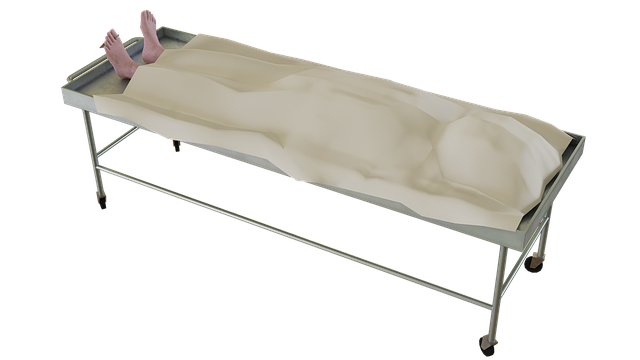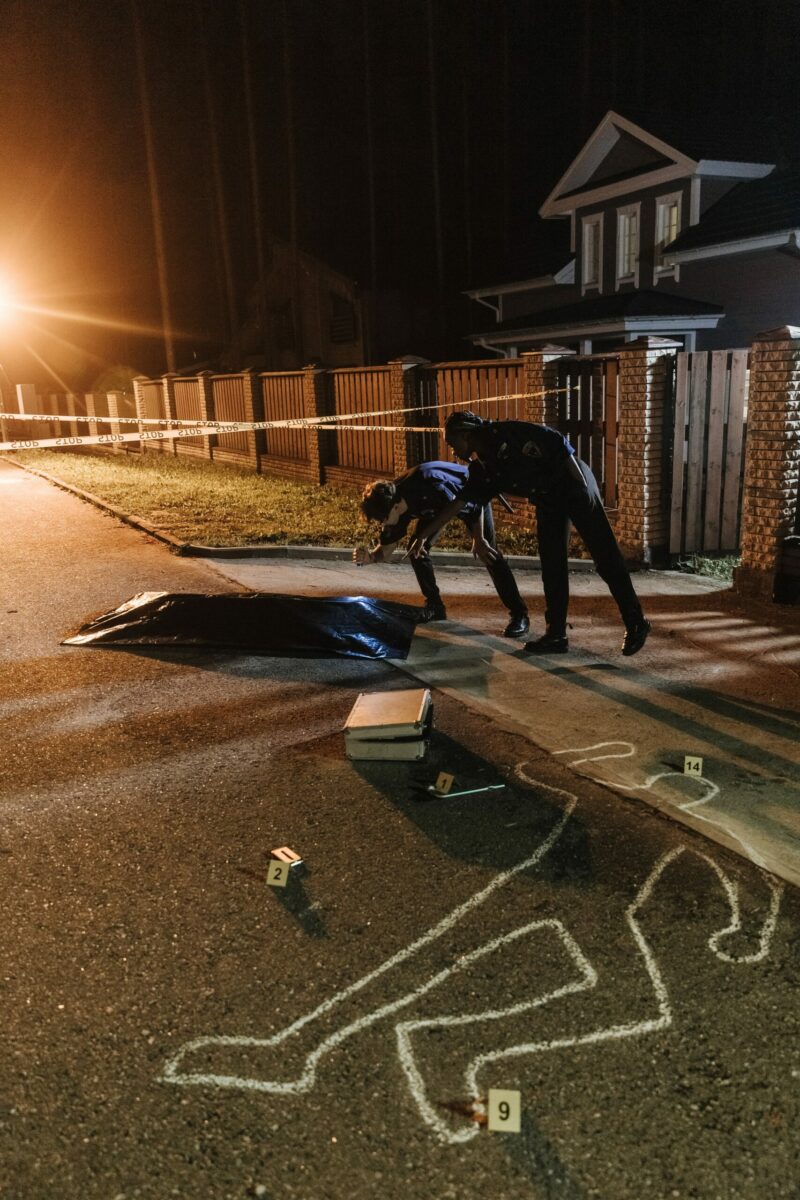7 Key Facts Of What Is Death Investigations
In this article, we’re going to explore the world of what is death investigations. This is all about finding out how and why someone passed away. It’s super important because it helps us understand the reasons behind a person’s death, and it plays a big role in justice, public health, and the well-being of our communities.
For example, when someone dies, there are experts called coroners or forensic pathologists who step in. They have a mission, and that is to figure out the cause and manner of death.
This medicolegal death investigation process involves many professionals and organizations, like law enforcement, medical examiners, forensic scientists, and even funeral directors. Depending on the situation, there are different types of death investigations they might do, such as natural deaths, accidents, suicides, homicides, or when they just can’t figure it out.
Throughout this article, we’re going to break down the steps of what is death investigations. These death investigation systems include securing the scene, examining the body, collecting evidence, performing an autopsy, and preparing a report. Moreover, each step comes with its own set of challenges, like preventing contamination, dealing with emotional crowds, or handling sensitive cultural beliefs.
So, by the end of this article, you’ll have a good grasp of how this intricate process works, why it matters, and how we can make it even better. Therefore, let’s dive in and uncover the mysteries behind what is death investigations.
What is Death Investigations: Medical Examiner Investigator vs. Coroner
In the world of death investigations, two important roles often come into play: the Medical Examiner Investigator and the Coroner. These individuals play a crucial part in uncovering the truth behind someone’s passing. Let’s take a closer look at what each role entails and how they work together throughout this article.
Medical Examiner Investigator
Medical Examiner Investigators are professionals who have a deep understanding of the human body and the science of death. They are usually trained in forensic pathology or related fields. When a death occurs, a Medical Examiner Investigator steps in to examine the body and gather information about the deceased.
Their job begins at the scene of the incident. They work to secure the area, preserving any potential evidence that might help determine the cause of death. This can be a challenging task, especially when dealing with distraught family members, harsh weather conditions, hazardous materials, or multiple scenes.
Once the scene is secure, the Medical Examiner Investigator examines the body itself. They carefully document everything, from external injuries and clothing to personal effects. This information becomes vital in piecing together the puzzle of what happened.
Coroner
On the other side of the coin, we have Coroners. Coroners are typically elected officials and may not have the same level of medical training as Medical Examiner Investigators. They serve as the legal representatives in death investigations.
Coroners are responsible for signing death certificates and determining the manner of death. They often work in conjunction with Medical Examiner Investigators, who provide the medical expertise. So, while they may not conduct the medical examinations themselves, they play a key role in the overall process.
Throughout this article, we’ll explore the distinctive roles of these two professions and how they collaborate to provide a comprehensive understanding of the circumstances surrounding a person’s death. This collaboration is essential for ensuring accuracy, fairness, and a complete investigation.
What is Death Investigations: Securing the Scene
When a death investigation begins, the very first step is crucial: securing the scene. This is like setting the stage for a thorough investigation. Think of it as creating a protective bubble around the area where the death occurred to ensure that nothing is disturbed, tampered with, or contaminated.

Establishing a Secure Perimeter
The perimeter is like an invisible wall that keeps unwanted people and things out. It’s the job of the investigators to create this boundary. They use barriers, tape, or even personnel to ensure that no one goes in or out without permission. This helps maintain the integrity of the scene.
Controlling Access
Access control is about making sure only the right people are allowed in. Those involved in the investigation get access while others, like curious onlookers, are kept out. This is done to avoid contamination and protect the evidence.
Documenting the Scene
Investigative teams meticulously document the entire scene. This means taking photographs, drawing sketches, and writing down notes. Everything they see is recorded because even the tiniest detail could be important later.
Preserving the Chain of Custody
The “chain of custody” is like a paper trail for evidence. It shows who had control of the evidence from the moment it was found until it was presented in court. Keeping this chain unbroken is vital to ensure the evidence’s integrity and reliability.
What is Death Investigations: Challenges and Difficulties
Securing the scene is no walk in the park. Sometimes, investigators face hostile or emotional crowds that can make their job more challenging. Severe weather conditions, hazardous materials, or multiple scenes (like in complex accidents) can also complicate matters. Handling these difficulties is an essential part of the process.
Throughout this article, we’ll continue to explore the various steps of a death investigation, shedding light on the complexity and challenges of each one. As we move forward, you’ll gain a better understanding of how investigators work tirelessly to ensure that every detail is examined and preserved, all in the pursuit of uncovering the truth behind a person’s death.
What is Death Investigations: Examining the Body
After the scene is secured, the next critical step in a death investigation is examining the body. This is where investigators start to piece together clues that might help unravel the mystery of how and why someone has passed away.
Observing and Documenting the External Appearance:
The first task is to carefully observe and document the external appearance of the deceased. This includes noting any visible injuries, the clothing they were wearing, and any personal effects they had with them. Even the smallest detail, like a bruise or a torn piece of clothing, can be a vital clue.
Examining Injuries:
The type and extent of injuries are particularly important. Were there any cuts, bruises, or fractures? Understanding these injuries is crucial in determining the cause of death. Sometimes, the nature of these injuries can reveal whether the death was due to an accident, suicide, or homicide.
Types of Evidence Collected:
During this examination, investigators also collect various types of evidence from the body. This can include things like fingerprints, blood samples, hair, clothing fibers, or even jewelry. All of these items could provide essential information about the circumstances surrounding the death.
Limitations and Challenges:
However, examining the body is not always straightforward. In some cases, the body may be in an advanced state of decomposition, making it challenging to identify injuries or collect evidence. In other instances, the body might be mutilated or dismembered, making the process even more difficult. Despite these limitations, investigators are trained to do their best to uncover the truth.
Throughout this article, we’ll delve deeper into the steps of a death investigation, showing you the dedication and attention to detail that investigators bring to their work.
What is Death Investigations: Collecting Evidence
Once investigators have examined the body, the next step in a death investigation is collecting evidence. This phase is like gathering puzzle pieces, each one representing a crucial aspect of the investigation. Collecting evidence is a detailed process that involves searching, identifying, and preserving potential clues.
Searching and Documenting the Scene:
Investigators start by searching the scene thoroughly. They need to be like detectives, searching for anything that might be relevant. Every detail counts, from the smallest objects to the layout of the scene itself. They document their findings extensively through photographs, notes, and sketches.
Identifying and Collecting Potential Evidence:
During the search, investigators identified potential evidence. This can range from items like weapons, substances, or personal belongings to anything that seems out of place. These pieces can help shed light on the circumstances leading to the person’s death.
Packaging, Labeling, and Transporting Evidence:
Once evidence is identified, it needs to be carefully handled. Investigators package it in a way that preserves its integrity and prevents contamination. They label each item to provide a clear chain of custody, indicating who collected it and when. Properly labeled evidence helps maintain its reliability throughout the investigation and any subsequent legal proceedings.
Types and Categories of Evidence:
Evidence comes in various forms, each potentially holding critical information. Biological evidence, like blood or hair, can help establish what happened. Chemical evidence might reveal if a toxic substance was involved. Trace evidence, such as fibers or soil, can connect individuals to a scene. Impression evidence, like footprints or tire tracks, could lead to important clues. And firearm evidence might help determine the weapon used. These different types and categories of evidence are like different pieces of the puzzle.
Challenges of Collecting Evidence:
Collecting evidence can be challenging. Finding, recognizing, and preserving evidence in a way that maintains its integrity is no small task. There’s always the risk of contamination, which can lead to unreliable results. Therefore, ensuring that the chain of custody remains unbroken is essential for the evidence to hold up in court.
As we continue through this article, we’ll dig deeper into what is death investigations.
What is Death Investigations: Performing an Autopsy
The next crucial phase in a death investigation is the autopsy. An autopsy is like a detailed examination of the body’s inner workings, and it’s where investigators aim to unlock the secrets that lie within.
Examining Internal Organs, Tissues, and Fluids:
During an autopsy, a forensic pathologist or medical examiner takes a close look at the deceased person’s internal organs, tissues, and bodily fluids. This in-depth examination helps determine what went wrong inside the body. If there were any diseases or injuries that played a role in the person’s death, this is where it’s discovered.
Tests and Analyses Performed:
The pathologist may perform various tests and analyses, such as toxicology, DNA testing, and ballistics. Toxicology tests help determine if any drugs, poisons, or alcohol were present in the body, which could have contributed to the death. DNA testing can help identify the person, especially if their identity is in question. Ballistics tests might be performed if the death involved firearms to identify the type of gun and the bullets used.
Obtaining Consent and Respecting Beliefs:
It’s important to note that performing an autopsy isn’t always straightforward. Obtaining consent is a critical step, and investigators must respect the cultural and religious beliefs of the deceased person and their family. In some cases, families might have objections to autopsies due to their personal or religious beliefs.
Limitations and Challenges:
Autopsies can also have limitations. Some diseases or conditions might not be visible to the naked eye, which means they may not be immediately apparent during the examination. Cultural and religious considerations can also pose challenges, as respecting these beliefs while performing an autopsy is essential.
Throughout this article, we will continue to dive into the detailed steps of a death investigation, providing insight into the challenges faced by investigators. Autopsies play a vital role in uncovering the mysteries of a person’s passing, and the dedicated professionals involved do their utmost to ensure that every piece of the puzzle is examined.

What is Death Investigations: Preparing a Report
The final step in a death investigation is preparing a report. It’s where all the findings and conclusions from the previous steps are put together into a comprehensive document. This report is a vital record of the investigation’s results, and it serves multiple important purposes.
Summarizing Findings and Conclusions:
In the report, investigators summarize all the findings and conclusions they’ve gathered throughout the investigation. This includes details from securing the scene, examining the body, collecting evidence, and the results of the autopsy. The report provides a clear and concise account of what they’ve learned.
Components of the Report:
The report typically includes several key components. It identifies the deceased person, specifies the date and location of the death, and states the cause and manner of death. Cause of death explains what physically led to the person’s passing, such as a specific injury or disease. Manner of death categorizes it as natural, accidental, suicidal, homicidal, or undetermined. These components help provide a comprehensive picture of what happened.
What is Death Investigations: Issues and Difficulties
Creating a report is not without its challenges. One of the significant challenges is communicating complex scientific concepts in a way that’s clear and understandable to non-experts. Investigators need to strike a balance between providing detailed information and making it accessible.
Throughout the article, we’ve explored the steps of what is death investigations, from securing the scene to preparing a report. The report, as the final piece of the puzzle, brings all the collected information together. It’s the culmination of the hard work and dedication of the professionals involved in the process. By providing a comprehensive and accurate record, these reports serve not only the needs of the investigation but also the justice system and the well-being of our communities.
What happens during a death investigation?
A death investigation is a process that takes place after a person dies to determine the cause and manner of death. The investigation is typically conducted by the police and/or the coroner or medical examiner.
The first step in a death investigation is to determine whether the death was natural, accidental, suicidal, or homicidal. This is done by examining the body, the scene of death, and any other relevant evidence.
What are the different types of death investigations?
The different types of death investigations include:
1. Natural Deaths: Deaths caused by natural causes such as diseases, organ failure, or old age.
2. Accidental Deaths: Deaths resulting from unintentional incidents such as car accidents, falls, poisoning, or drowning.
3. Suicides: Deaths caused by intentional self-harm or self-inflicted injuries.
4. Homicides: Deaths caused by the actions of another person with the intent to cause harm or death.
5. Suspicious Deaths: Deaths that raise doubts or suspicions about the circumstances surrounding them and require further investigation.
6. Undetermined Deaths: Deaths where the cause or manner of death cannot be determined conclusively due to insufficient evidence or conflicting information.
It is important to note that the specific categorization of death investigations may vary based on jurisdiction and local laws.
What is Death Investigations vs. Homicide Investigations?
Death investigations and homicide investigations are two distinct types of investigations carried out by law enforcement agencies.
Death investigations focus on determining the cause and manner of a person’s death. This can include deaths that are natural, accidental, or a result of suicide.
Homicide investigations, on the other hand, specifically deal with deaths that are the result of intentional acts committed by another person. The focus is on identifying and apprehending the person responsible for the death.
Death Investigations Checklist: A Comprehensive Guide
This checklist serves as a valuable tool, guiding them through the intricate process of uncovering the truth behind a person’s passing.
Here is an overview of the key elements that make up a death investigations checklist:
1. Scene Security:
- Establish a secure perimeter.
- Control access to the scene.
- Document the surroundings.
- Preserve the chain of custody for evidence.
2. Body Examination:
- Observe and document the external appearance.
- Examine injuries, clothing, and personal effects.
- Collect and document evidence from the body.
3. Evidence Collection:
- Thoroughly search the scene.
- Identify and collect potential evidence.
- Properly package, label, and transport collected evidence.
- Maintain the chain of custody for all evidence.
4. Autopsy:
- Conduct a detailed examination of internal organs, tissues, and fluids.
- Perform various tests and analyses, such as toxicology and DNA testing.
- Obtain proper consent and respect cultural and religious beliefs.
- Document the findings and conclusions from the autopsy.
5. Report Preparation:
- Summarize all findings and conclusions from the investigation.
- Include key components in the report, such as the deceased’s identity, date and location of death, cause of death, and manner of death.
- Address uncertainties and limitations in the report.
6. Collaboration:
- Ensure effective communication and collaboration between Medical Examiner Investigators and Coroners.
- Work together to provide a complete understanding of the death circumstances.
7. Quality Assurance:
- Maintain a commitment to accuracy and thoroughness throughout the investigation.
- Consistently follow standardized protocols and procedures.
- Keep up with ongoing training and advancements in forensic techniques.
A death investigations checklist is an invaluable tool that helps investigators stay organized, ensure nothing is missed, and maintain the highest standards of professionalism and accuracy. By following this structured checklist, investigators can conduct comprehensive, fair, and reliable death investigations.
Conclusion: What is Death Investigations
Death investigations are a vital part of our society, playing a significant role in our quest for justice, public health, and the well-being of our communities.
These investigations are like puzzles, and each step – from securing the scene to preparing the report – is a piece that brings us closer to understanding how and why someone passed away.
The collaboration between Medical Examiner Investigators, Coroners, and Law Enforcement, each with their distinctive roles, is fundamental in providing a comprehensive understanding of death. This partnership ensures accuracy, fairness, and a complete investigation.
To improve the quality and efficiency of death investigations, standardizing protocols and procedures is vital. Increased training and education for personnel and the adoption of the latest technologies and methods can help ensure that investigations are thorough and accurate.
Medical Investigator’s work not only brings closure to grieving families but also contributes to our understanding of the circumstances surrounding a person’s passing. By shedding light on the mysteries of death, these investigations play a vital role in our quest for truth and justice.
Thank you for reading this article and please leave comments or questions. To read about the role of Crime Scenes in Human Trafficking, click here.
In addition, to read about Sexual Crime Scenes, and how they are investigated, click here.
To read comprehensive product reviews for 2023 visit my other website.
Willie McCain







I highly appreciate your article on death investigation. As a death investigator myself, your practical guidance illustrated serves as a channel to ensure that a proper death investigation is conducted systematically.
thx. i appreciate.